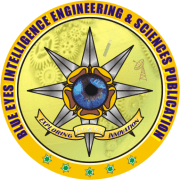Corrections, Retractions, and Post Publication:
Correction:
If an error in a published article affects its interpretation but doesn’t compromise its academic credibility, the journal will release a correction statement to address the mistakes. These errors could include mislabelling a figure or omitting important information about the authors’ funding or conflicts of interest [1].
Readers accessing articles in both HTML and PDF formats will have the convenience of a Crossmark logo that provides real-time updates on the current status of the contents, which may include any revisions, errata, or retractions made to that specific article. The Crossmark button offers an easy-to-use and intuitive interface that allows readers to stay up-to-date with the latest information related to the contents [1][2].
Authors can solicit revisions to their published articles if severe mistakes impact scientific integrity, the reputation of the authors, or the journal. This process ensures that accurate and reliable information is presented to the readers and maintains the high standards expected within the scientific community [2]. The errors may include misplaced data from the article or adding or retracting the author’s name from the article. The journal will rectify mistakes in the published article’s PDF and HTML available on the journal website. The embedded Crossmark logo in the article (PDF and HTML) allows for real-time updates, including rectifying errors in the text or mislabelling in the figures/tables.
A supplement is appended to a research article when it’s necessary to provide additional information that was not available at the time of publication but is essential for better comprehension of the content by the readers. The corresponding author disseminates the supplement data to the editor, which can notify the readers, including the Crossmark logo in PDF and HTML versions of the article.
Editor Notes:
Editors hold the power to provide remarks that highlight noteworthy issues that may impact the authenticity of a published article [4]. These comments are accessible online and connected to the original article using a unique digital object identifier (DOI). Additionally, they are being incorporated into major scholarly databases like PubMed, Scopus, and WoS.
Retraction:
When a revision notice cannot handle substantial issues, the journal may confidently retract the article from its online platform [3] [4]. The journal can retract the article from the website partially or permanently due to one of the following cases:
- If a court or government order is in effect or anticipated to be published, it may be necessary to remove a particular article.
- In case the content violates the lawful entitlements of a third party, such as infringement of their intellectual property or privacy rights, or if it is considered illegal.
- If there is clear evidence of (a) conflict of interest, (b) misconduct, (c) compromised peer review, (d) unethical research, and (e) violence in clinical trials.
Bibliographic metadata containing information like author’s names and titles will remain available on the website. However, if an article needs to be retracted, the published version, including HTML and PDF, will have a “retracted” Crossmark logo and Watermark. A statement labelled ‘Retraction: [article title]’ will be issued to retract the article from the journal. This statement will be linked to the retracted article to ensure accuracy and transparency. The retraction statement can be found in the journal.
Post Publication:
Any article adjustments will accompany a formal correction or retraction notice in cases requiring post-publication corrections or retractions. This notice will meticulously delineate the specific inaccuracies within the article and detail the comprehensive scope of the corrections applied. The notice will provide the rationale underpinning these actions for retractions or removals, ensuring transparency in the correction process5.
References:
- International Committee of Medical Journal Editors (ICMJE) – Corrections, Retractions, Republications and Version Control
- COPE- Retraction or correction
- WAME – Responding to Allegations of Possible Misconduct
- ORI – Handling Misconduct – Inquiry & Investigation Issues
- Publication Ethics: Journal Options for Post-Publication Discussions and Corrections
